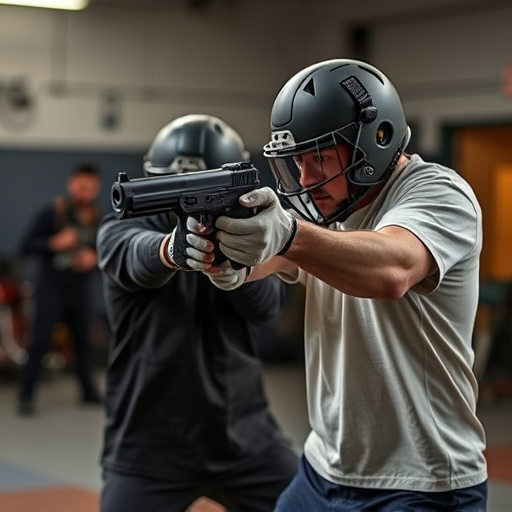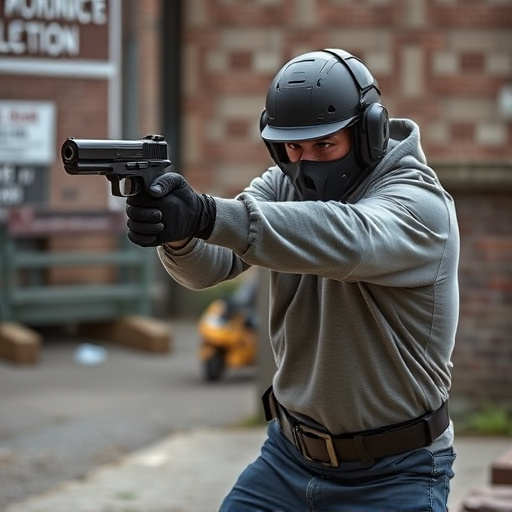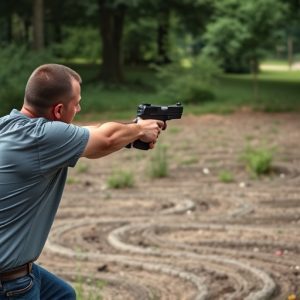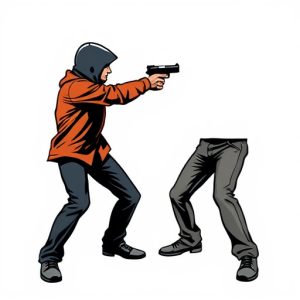Unlocking Stun Weapon Range: Self-Defense Tips for Optimal Effectiveness
Choosing a best value stun gun for self-defense requires understanding key factors like power output…….
Choosing a best value stun gun for self-defense requires understanding key factors like power output, projectile type, weather conditions, and environment. Ideal range is 5-20 feet (1.5-6 meters), where stun weapons deliver powerful, precise incapacitation without collateral damage. Prioritize features like high electric charge, LED flashlight, adjustable voltage, durable construction, and easy activation for optimal control in emergency situations.
Discover the powerful capabilities of stun weapon projectiles and their surprising range. This comprehensive guide explores the factors that influence the distance these non-lethal weapons can reach, ensuring your safety in various scenarios. We uncover the ‘best value stun guns for self-defense’ on the market, highlighting key features and effective ranges. Learn essential tips to maximize your safety by utilizing stun weapons within ideal range distances.
- Understanding Stun Weapon Projectile Range: Factors Influencing Distance
- Best Value Stun Guns for Self-Defense: Features and Effective Range
- Maximizing Your Safety: Tips for Using Stun Weapons Within Ideal Range Distances
Understanding Stun Weapon Projectile Range: Factors Influencing Distance

Understanding Stun Weapon Projectile Range: Factors Influencing Distance
The range at which a stun weapon can effectively neutralize an opponent is crucial for self-defense scenarios, offering users the best value in terms of safety and control. However, it’s not as straightforward as a single, fixed distance. Several factors come into play, each affecting the projectile range capabilities of stun weapons. Among these, the power output of the stun gun is key; higher voltage outputs generally result in increased reach, ensuring more time to react and escape dangerous situations.
Additionally, the type of projectile matters. Stun guns can fire either non-lethal round or tasers, with each having unique ranges. Tasers, for instance, often have a shorter effective range compared to solid projectiles but are still capable of stunning targets from relatively close distances. Other considerations include weather conditions and the environment; cold temperatures can temporarily reduce stun weapon effectiveness, while certain surfaces might affect projectile trajectory. Ultimately, understanding these variables empowers individuals to make informed decisions when choosing the best value stun gun for self-defense, ensuring they’re prepared for a range of scenarios.
Best Value Stun Guns for Self-Defense: Features and Effective Range

When considering the best value stun guns for self-defense, several key features become essential. First and foremost, look for a weapon with an impressive electric charge that delivers a powerful jolt to neutralize an assailant quickly. A good stun gun should also feature a bright LED flashlight, enhancing visibility during low-light or dark situations. Additionally, consider models with adjustable voltage settings to adapt to various threat levels without excessive risk.
The effective range is another critical aspect. Top-tier stun guns can emit a shock wave up to 25–30 feet (7.6–9 meters), allowing users to disable an attacker from a safe distance. Look for products with durable construction, easy activation mechanisms, and a comfortable grip for optimal control during emergency situations. With these features in mind, you’ll be well-equipped to defend yourself effectively.
Maximizing Your Safety: Tips for Using Stun Weapons Within Ideal Range Distances

When considering a best value stun gun for self-defense, understanding ideal range distances is paramount for maximizing your safety. Stun weapons are most effective when deployed within close to medium range—typically 5 to 20 feet (1.5 to 6 meters). This range ensures the stun effect is powerful enough to incapacitate an attacker without posing a risk to bystanders or causing excessive harm. Exceeding these distances may reduce the stun’s intensity, as the electrical current weakens over distance.
To make the most of your stun gun, practice aiming and firing at these range markers. Keep in mind that different models have varying range capabilities, so always refer to the manufacturer’s specifications. Additionally, maintain a safe distance from walls or objects that could deflect or absorb the shock, ensuring your shot has the best chance of hitting the target directly.
Stun weapons, with their projectile range capabilities, offer a powerful tool for personal safety. By understanding the factors influencing range and adopting best practices, users can maximize the effectiveness of these devices in self-defense scenarios. The ideal range for a stun weapon varies based on its power and user proficiency, but consistently staying within recommended distances ensures optimal performance and safety. When choosing a stun gun, look for quality features that enhance accuracy and range, such as adjustable stun levels and durable construction, making it the best value for self-defense.


